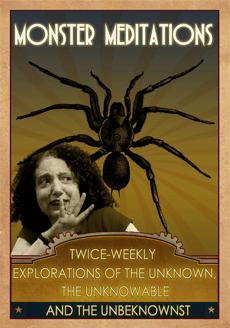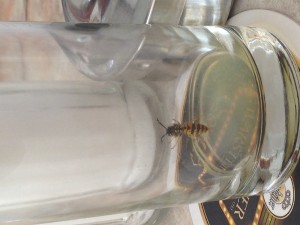Individual and collective consciousness are often the subject—or backdrop—of science fiction stories. It’s difficult for me to contemplate a HIVE mentality without thinking about the BORG of Star Trek the Next Generation fame. When Captain Picard is absorbed into their collective it was the perfect example of a strong individual being consumed by a group.
Real life has another manifestation of the hive and it’s the mob mentality that enables—and encourages—people to do terrible things as part of a group, things that they would never consider doing on their own. Members of a mob riot, loot, lynch, trample over other people, cheer violence and lose themselves in the group. It’s creepy and it’s fascinating.
The mini version of this is simple peer pressure. We’ve all felt it and most of us have succumbed to its temptations in one way or another. I may have resisted certain specific pressures—I didn’t do cocaine as a teenager when it was offered—but I went along with plenty of other less-than-stellar plans. Both conforming and rebelling are part of growing up. It’s only when the group of teens indulges in mayhem that the rest of us take notice.
There are plenty of horrific true and fictional stories about gang rapes, group murders and other crimes perpetrated by young people ‘caught up’ in the hive mentality of group-driven violence.
Cults are another kind of hive. I’m old enough to remember the news reports from Jonestown. The mass suicide created the phrase ‘drink the koolaid’ as a synonym for adhering to the group-think of cults, sub-cultures and corporations. Of course many of the deaths at Jonestown weren’t self-inflicted. The children, the elderly and the rebellious were murdered. A few people escaped and a few more happened to be off-site at the time and survived to mourn their friends and family.
A while back (more than 10 years ago) I did some research on Jonestown, reading memoirs and some critical analysis of the religious organization that began as a benign community group with sincere efforts to help the poor. It morphed into a cult and relocated to Guyana where it unraveled under the direction of a single, megalomaniac leader—Jim Jones. In a hive, he’d be the supreme queen bee, the individual mind at the helm of a devoted hive.
As a natural skeptic, I’m flummoxed by the allure of the hive/cult/group consciousness. Still, the story potential is almost irresistible. The internal tug of war between the individual and belonging to the hive, the mystifying rise of the leader…. Maybe I should figure out where I put those books on Jonestown?






Given the rise and rise of /that/ group, and the terror they have unleashed recently, this post on the Hive mind is more than apt. And it helps explain why so many ‘normal’ young men and women have succumbed to its allure. Nevertheless, I think the not-so-normal have gravitated to the violence as well, and they are the ones spear-heading the worst of the atrocities. Sad times for us all.
Violence is the key difference between a HIVE mind that dictates how a bunch of kids dress and the truly dangerous actions of cults, terrorists and gangs. Sometimes it’s hard to decide how to describe some of the scariest groups. Are they hybrids of all three? And some add a dash of Borg-style corporation think where individuals lose the ability to speak up in defiance of the HIVE.
Scary!
Being a natural sceptic I have a problem understanding how a group of individuals could believe the promises made by someone like Jim Jones. I remember another cult in somewhere like Switzerland that went pretty much the same way too, the Davidians if I remember correctly.
I want something to believe in but lack the faith to believe without some kind of proof. It’s those who are willing to accept something on faith alone that make up religions and crazy offshoots that become cults.Or maybe religions are actually cults anyway.
With some groups there seems to be a hard core inner group of members who others join either through a need to belong or perhaps through fear. It seems Hitler’s Brownshirts must have gathered in the hive like that.But to understand how so many could be willing to commit acts of mindless violence still escapes me.Is it possible that we all have a propensity towards violence given the opportunity?
xxx Huge Hugs Candy xxx
FEAR —fear of the outsiders, fear of change, fear of contamination…. FEAR is often the motivator for cults. But so is love. LOVE is here inside our walls and outside there is danger. Cults exploit desires & fears to draw members in and hold them tight.
But so do political parties, religions and other organizations. The big question is when does it become a true HIVE mentality and when is the group a comfortable community for individuals? That is the huge question.
In the case of riots and looting and crowd violence, it’s really a case of the individual surrendering —even just for a short while—the ability and responsibility of decision-making. That’s a fascinating concept. It happens in all societies in one way or another and it can be as sudden as an angry mob during on a shop keeper to a motorcycle gang attacking a car that caused an accident. That happened recently here, and the video was awful. The fact that one of the gang members was an undercover cop —seen on video participating in the violence—only added to the complexity of who did what, when, why and how it can be prevented from happening again.
I hope I don’t offend anyone here, but your mention of love as being a motivator suddenly put me in mind of another hive mind phenomenon we all tacitly ‘approve’ – i.e. young men volunteering to go fight the good fight in defence of King and Country.
I know ignorance and romanticism play a huge part in our volunteer soldiers, but doesn’t it also play a part in these young muslim men [and girls]?
I’m not excusing what they are doing, just trying to understand ‘how’ it can happen. Perhaps if we all knew, we could prevent the next cycle of terrorism when it occurs.
I think you are spot on and no one should be offended. The impulse is the same, the outcome is different that’s all. After September 11, 2001 a great many brave and noble young people volunteered for the military. Their parents/grandparents generations—stung one way or another by Vietnam— were terrified for the safety, but proud of their idealism. The sincere belief that you are serving your country, your people, your community is a wonderful thing. The problem comes when that sincere commitment is twisted into supporting something terrible. It may be the same or a similar impulse that draws young people causes and ultimately become suicide bombers and mass murderers, but somewhere along the line things have gotten twisted.
It’s true that young people are vulnerable to influence and gang rapes at frat parties or high school girls beating up a classmate who “wronged” one of them are examples of actions that the group takes together that most of the group’s members would not think of on their own. That’s where the HIVE is so powerful. Can you say to your best friends, “No, this is wrong I’m not going to (fill in the blank)” and risk losing your place in the supportive group. Maybe terrorist groups are supportive hives for new members? It must be very hard to say “no” when you are deep inside one of those groups.